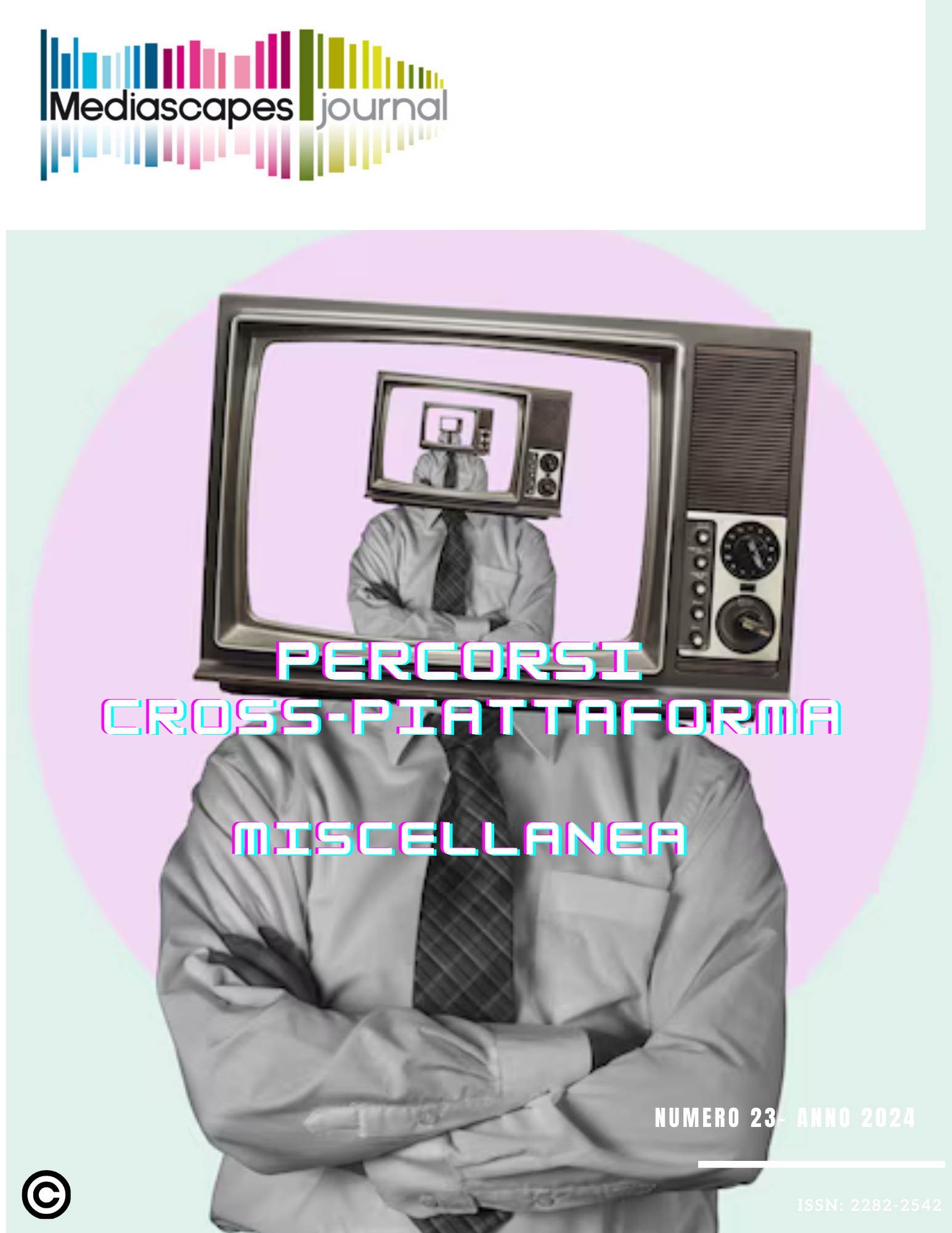L’operazione documentaria attraverso gli ambienti mediali interattivi
Il caso di Chloé Galibert-Laîné
Parole chiave:
media environments, interactive media, desktop documentary, Chloé Galibert-LaînéAbstract
The contemporary scenario demands an interpretation of reality as inherently hybrid, and of the individual's condition as osmotic and “ecomedial”, marked by a constant – and seamless – transition between off- and on-screen realities (that of the digital devices we use, which configure – and are configured as – the environments we inhabit). Contemporary audiovisual production seems to take this into consideration by configuring multiple forms of interaction with interactive digital media. If fictional desktop cinema has demonstrated the possibility of representing these media spaces as environments in which to develop sometimes complex stories, also using the framework of film genres, other forms of experimentation lie outside the regime of fictional storytelling, establishing a fruitful dialogue with contemporary documentary forms. I intend to focus attention precisely on this aspect. What is at stake is both the modes of access to narrative materials and their organization during consumption – as in the case of web documentaries – and the interplay between archival material research and imaginative configuration of the film during production, as in the desktop documentary, where what Francesco Casetti has defined as a complex “ecology of operations” seems to be at the center of attention. In all these forms of contamination between audiovisual production and interactive digital media, a fusion between contemporary documentary cinema, archival materials, and digital technologies emerges and reinforces itself, also manifesting in the visual-organizational fabric of the film, a peculiar perceptual and operational ecology characterizing the relationship between user and interface, which needs to be carefully examined and understood. This article is structured into three parts. In the first part, I will attempt to theoretically define the ecological configuration on which today’s media system – within which we act and carry out our daily activities – is based. I will specifically outline the peculiar aspects of the contemporary ecological perspective, which presents significant differences compared to traditional media ecology. In the second part, I will focus on two films by the French scholar and filmmaker Chloé Galibert-Laîné with the aim of investigating certain modes of “staging” contemporary digital media made possible by audiovisual media. In the conclusions, I will attempt to advance some considerations regarding the narrative and aesthetic specificities of the desktop documentary and its potential to intercept and narrate a reality that seamlessly traverses both material and virtual spaces.
##submission.downloads##
Pubblicato
Come citare
Fascicolo
Sezione
Licenza

TQuesto lavoro è fornito con la licenza Creative Commons Attribuzione 4.0 Internazionale.
Gli autori che pubblicano su questa rivista accettano le seguenti condizioni:
- Gli autori mantengono i diritti sulla loro opera e cedono alla rivista il diritto di prima pubblicazione dell'opera, contemporaneamente licenziata sotto una Licenza Creative Commons - Attribuzione che permette ad altri di condividere l'opera indicando la paternità intellettuale e la prima pubblicazione su questa rivista.
- Gli autori possono aderire ad altri accordi di licenza non esclusiva per la distribuzione della versione dell'opera pubblicata (es. depositarla in un archivio istituzionale o pubblicarla in una monografia), a patto di indicare che la prima pubblicazione è avvenuta su questa rivista.
- Gli autori possono diffondere la loro opera online (es. in repository istituzionali o nel loro sito web) prima e durante il processo di submission, poiché può portare a scambi produttivi e aumentare le citazioni dell'opera pubblicata (Vedi The Effect of Open Access).


